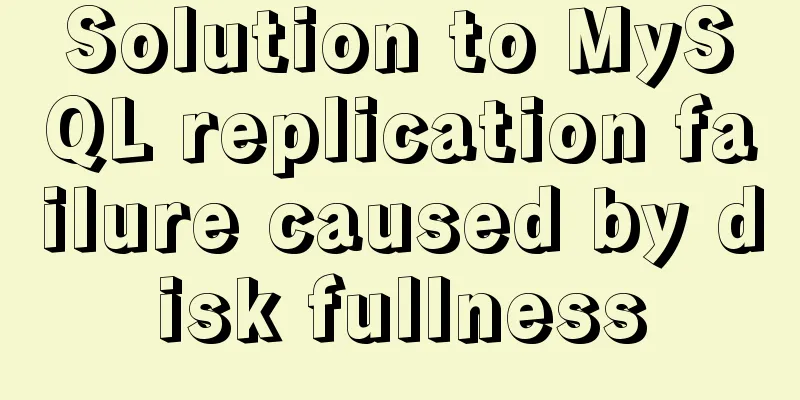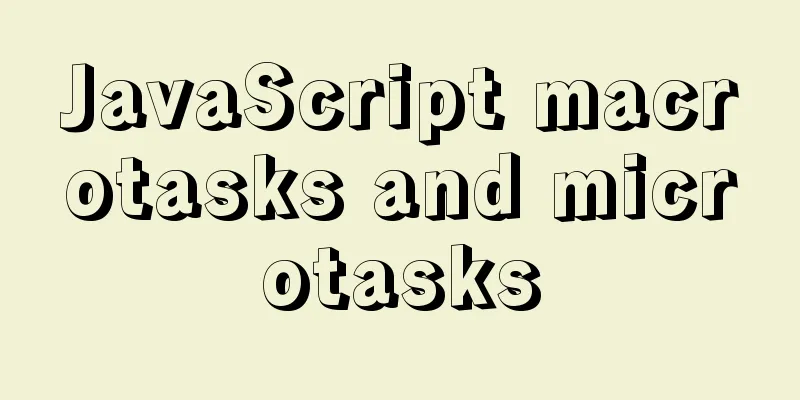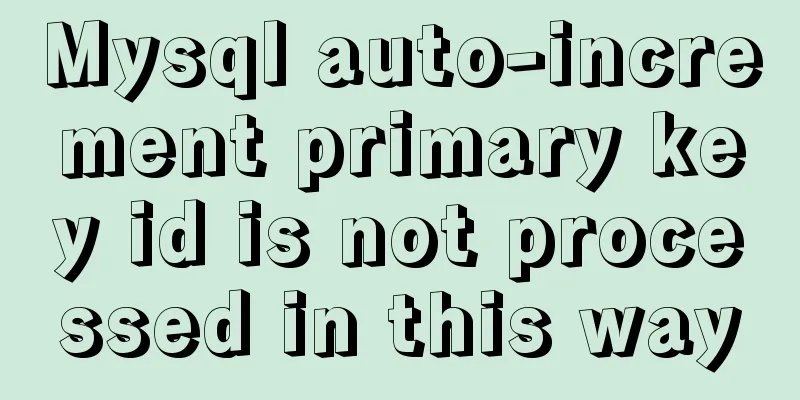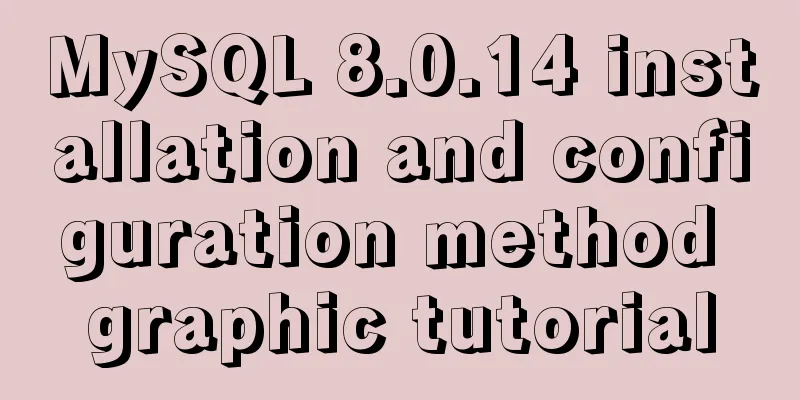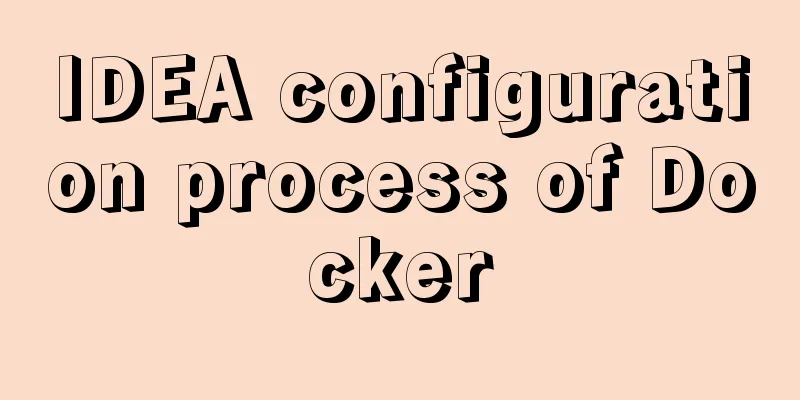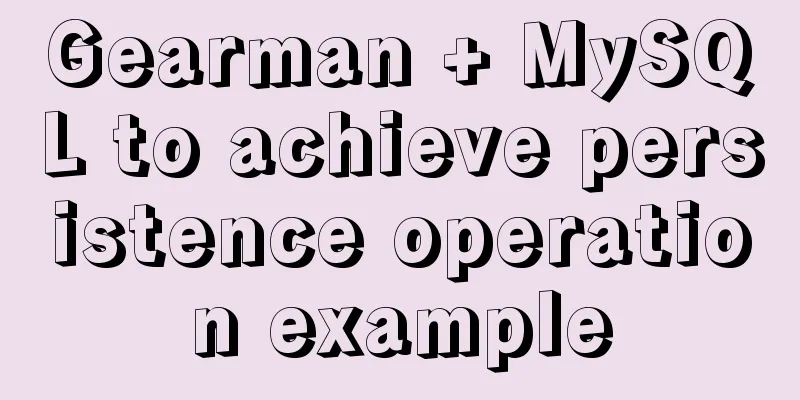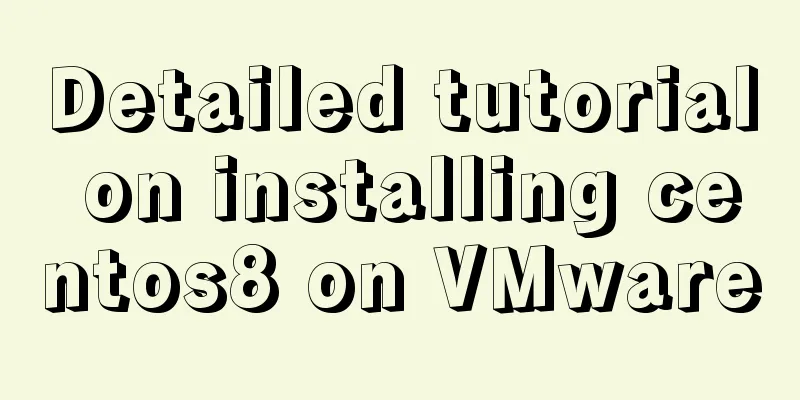Graphical explanation of the solutions for front-end processing of small icons
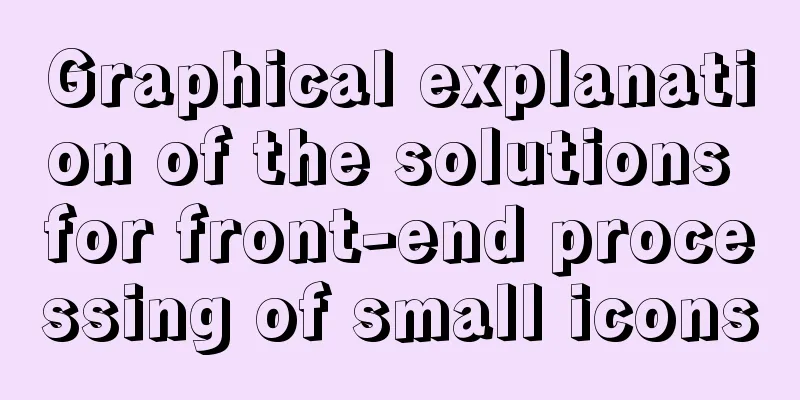
|
Preface Before starting this article, let’s do a multiple-choice question: What is the purpose of using build tools in front-end development? A. Because node.js is popular now, everyone is using build tools B. Make front-end development more advanced and compile it just like back-end to run C. Let automated tools replace repetitive manual operations, such as merging codes, refreshing browser preview effects, etc. If you choose A or B, please close this article directly; if you choose C, please continue reading. In fact, there is only one purpose for using tools: to automate some repetitive operations and improve work efficiency . Ok, now that we have clarified this point, let's explore some ways to combine a bunch of small icons into one image file and generate the corresponding style. According to the generated files and usage methods, they can be roughly divided into three types of processing methods: png sprite Synthetic Sprite is the oldest and most mature solution, which combines different PNG icons into one PNG image. Manual Operation Some companies even ask UI designers to merge small icons (UI designers have become automated tools, embarrassing~). This reduces the workload of the front-end but also brings some problems.
Therefore, this approach is not recommended and is not within the scope of our discussion. Automation Tools When we have automated tools, some problems can be solved to optimize the entire process.
Configuration Files Take npm's gulp.spritesmith module as an example to implement the whole process. This is the task configured in gulpfile.js:
var gulp = require('gulp');
var $ = require('gulp-load-plugins')();
gulp.task('png', function () {
gulp.src('./src/*.png')
.pipe($.spritesmith({
imgName: 'icon.png', //Parameter, generated image file name cssName: 'icon.css', //Parameter, generated style file name cssTemplate: './src/png_template.hbs' //Parameter, style file template path, the default is handlerbars template }))
.pipe(gulp.dest('dist/png'));
});It has powerful functions. In addition to css files, it can also generate scss and less files, and can also format them with template files. Here I customized a png_template.hbs file with the following content:
// Mainly adds a common style to give the icon an inline block-level style.icon {
display: inline-block;
}
{{#sprites}}
.icon-{{name}} {
background-image: url({{{escaped_image}}});
background-position: {{px.offset_x}} {{px.offset_y}};
width: {{px.width}};
height: {{px.height}};
}
{{/sprites}}Development Process After the configuration is completed, put two small icons, question.png and hook.png, in the source folder for debugging. After gulp processing, two files are generated: icon.css and icon.png. Open icon.css and you can see that two style classes are generated according to the icon name:
.icon {
display: inline-block;
}
.icon-hook {
background-image: url(icon.png);
background-position: -40px 0px;
width: 16px;
height: 16px;
}
.icon-question {
background-image: url(icon.png);
background-position: 0px 0px;
width: 40px;
height: 40px;
}It is simple to use in code // Reference the generated css file <link rel="stylesheet" href="./png/icon.css" charset="utf-8"> ... //Add style class directly to the tag <i class="icon icon-hook"></i> <i class="icon icon-question"></i> See the screenshot at the end of the article for preview effects question Thanks to technological advances and the improvement of people's living standards, this efficient method immediately encountered a "natural enemy": the retina screen with high DPR. If you use responsiveness to determine DPR, all the previous workload will be doubled, and redundant styles will also have to be loaded. Moreover, as the screen is updated, the DPR increases, and you have to make an extra picture and style. Just thinking about it is too tiring-_-|| So is there a picture that can adapt to screens with different DPRs? The dawn of CSS3 has given us a new direction. font-face Also known as font icon, this technology simply combines vector graphics to generate font files, and then references the corresponding font encoding in CSS to render it into an image. Because fonts are adapted to various screens, font icons also inherit this advantage. Manual Operation There are many websites that make font icons, the more popular ones include icomoon, Alibaba Icon Library, etc. The basic operation is to edit the icon online and then download a compressed package containing font files and styles. The first problem is that different icon sizes require manual adjustment of the font-size attribute; the second is that manual operations are too frequent: upload - edit - download; the last is that it depends on the network environment, and the icon cannot be edited without a network. In this case, we tried to generate the files offline using automated tools. Automation Tools The module gulp-iconfont with a large number of stars on GitHub is still used, but another module gulp-iconfont-css is required to generate CSS at the same time. Configuration Files Configure gulpfile.js
var gulp = require('gulp');
var $ = require('gulp-load-plugins')();
gulp.task('iconfont', function () {
// Configure the style first, then configure the font file return gulp.src(['src/*.svg'])
.pipe($.iconfontCss({
fontName: 'iconfont', //font name path: './src/font_template.css', //template file path cssClass: 'iconfont' //style class name }))
.pipe($.iconfont({
fontName: 'iconfont', //font name formats: ['ttf', 'eot', 'woff', 'woff2', 'svg'] //output font file format}))
.pipe(gulp.dest('dist/font'));
});Template files are omitted here~ Development Process After the configuration is completed, put two small icons, question.svg and hook.svg, in the source folder for debugging. After gulp processing, 6 files are generated: _icon.css, iconfont.eot, iconfont.svg, iconfont.ttf, iconfont.woff, iconfont.woff2. Open _icon.css, and you can see that two style classes are generated according to the icon name:
@font-face {
font-family: "iconfont";
src: url('./iconfont.eot');
src: url('./iconfont.eot?#iefix') format('eot'),
url('./iconfont.woff2') format('woff2'),
url('./iconfont.woff') format('woff'),
url('./iconfont.ttf') format('truetype'),
url('./iconfont.svg#iconfont') format('svg');
}
.iconfont:before {
font-family: "iconfont";
-webkit-font-smoothing: antialiased;
-moz-osx-font-smoothing: grayscale;
font-style: normal;
font-variant: normal;
font-weight: normal;
/* speak: none; only necessary if not using the private unicode range (firstGlyph option) */
text-decoration: none;
text-transform: none;
}
.iconfont-hook:before {
content: "\E001";
}
.iconfont-question:before {
content: "\E002";
}It is also easy to use in code // Reference the generated css file <link rel="stylesheet" href="./font/_icons.css" charset="utf-8"> ... //Add style class directly to the tag <i class="iconfont iconfont-hook"></i> <i class="iconfont iconfont-question"></i> See the screenshot at the end of the article for preview effects Usage Problems Like the tools introduced before, you can use templates and generate scss, less, and css files in multiple formats. The annoying problem is that all the generated font icons will take the height of the tallest icon. This means that some icons need to have their height reset! The automated operation was instantly downgraded to semi-automated, and the generated image was jagged (I don’t know if it was a configuration problem), so it can only be considered a failed solution. svg sprite Just when I was feeling depressed, I saw an article by Zhang Xinxu titled "Future Hot: Introduction to SVG Sprite Technology" (The conclusion at the end compares font icons and svg sprites, friends who are interested can take a look) It made me feel that there is a bright future: it turns out that there is a more powerful svg sprite. Integrate SVG vector icons into one SVG file and display them in the form of symbol or use tags when using them. Manual Operation When considering this solution, I didn’t plan to use manual methods, because if manual operation is required, it is better to use font icons, so I directly considered automated tools. Automation Tools The module used is gulp-svg-sprite, which has the second highest number of stars on github after gulp-svgstrore. Supports scss, less, and css file format output. Configuration Files
var gulp = require('gulp');
var $ = require('gulp-load-plugins')();
gulp.task('svg', function () {
return gulp.src('./src/*.svg')
.pipe($.svgSprite({
mode: {
symbol: {
prefix: `.svg-`,
dimensions: '%s',
sprite: '../icon.svg',
symbol: true,
render: {
css: {
dest: '../icon.css'
}
}
}
}
}))
.pipe(gulp.dest('dist/svg'));
});Development Process The whole process is the same as above. After the configuration is completed, put two small icons, question.svg and hook.svg, in the source folder for debugging. After gulp processing, two files are generated: icon.svg and icon.css. Open icon.css and you can see that two style classes are generated according to the icon name:
.svg-hook {
width: 16px;
height: 16px;
}
.svg-question {
width: 40px;
height: 40px;
}Very concise, isn’t it? ! ! It's a little more complicated to use: //Reference style file <link rel="stylesheet" href="./svg/icon.css" charset="utf-8"> ... <svg class="svg-hook"> <use xlink:href="./svg/icon.svg#hook"></use> </svg> <svg class="svg-question"> <use xlink:href="./svg/icon.svg#question"></use> </svg> See the screenshot at the end of the article for preview effects Compared to font icons:
Usage Problems All IE browsers (including IE11) do not support obtaining a certain component of an external SVG file. But it is also easy to solve, just use a third-party js - svg4everybody. Summarize The code address shown in the article: https://github.com/yalishizhude/sprite-demo or you can download it locally
Well, the above is the full content of this article. I hope that the content of this article can bring some help to your study or work. If you have any questions, you can leave a message to communicate. Thank you for your support of 123WORDPRESS.COM. |
<<: What is JavaScript anti-shake and throttling
>>: Linux Centos8 Create CA Certificate Tutorial
Recommend
Mysql anonymous login cannot create a database problem solution
Frequently asked questions Access denied for user...
Click on the lower right corner of the css pseudo-class to see a check mark to indicate the selected sample code
Effect: css: .s_type { border: none; border-radiu...
Installation and deployment of MySQL Router
Table of contents 01 Introduction to MySQL Router...
Ideas and codes for implementing iframe to intercept part of the website content
Copy code The code is as follows: <div style=&...
Detailed explanation of firewall rule settings and commands (whitelist settings)
1. Set firewall rules Example 1: Expose port 8080...
Pure CSS meteor shower background sample code
GitHub address, you can star it if you like it Pl...
Three ways to achieve text flashing effect in CSS3 Example code
1. Change the transparency to achieve the gradual...
How to migrate the data directory in mysql8.0.20
The default storage directory of mysql is /var/li...
CSS pixels and solutions to different mobile screen adaptation issues
Pixel Resolution What we usually call monitor res...
Does the % in the newly created MySQL user include localhost?
Normal explanation % means any client can connect...
JavaScript Basics Operators
Table of contents 1. Operators Summarize 1. Opera...
ERROR 2002 (HY000): Can't connect to local MySQL server through socket '/tmp/mysql.sock'
error message: ERROR 2002 (HY000): Can't conn...
Detailed explanation of several commands in Linux to obtain detailed hardware information
In Linux systems, especially server systems, it i...
Commonplace talk about the usage of MYSQL pattern matching REGEXP and like
like LIKE requires the entire data to match, whil...
MYSQL stored procedures, that is, a summary of common logical knowledge points
Mysql stored procedure 1. Create stored procedure...

